Kailua – Oahu’s Local Paradise
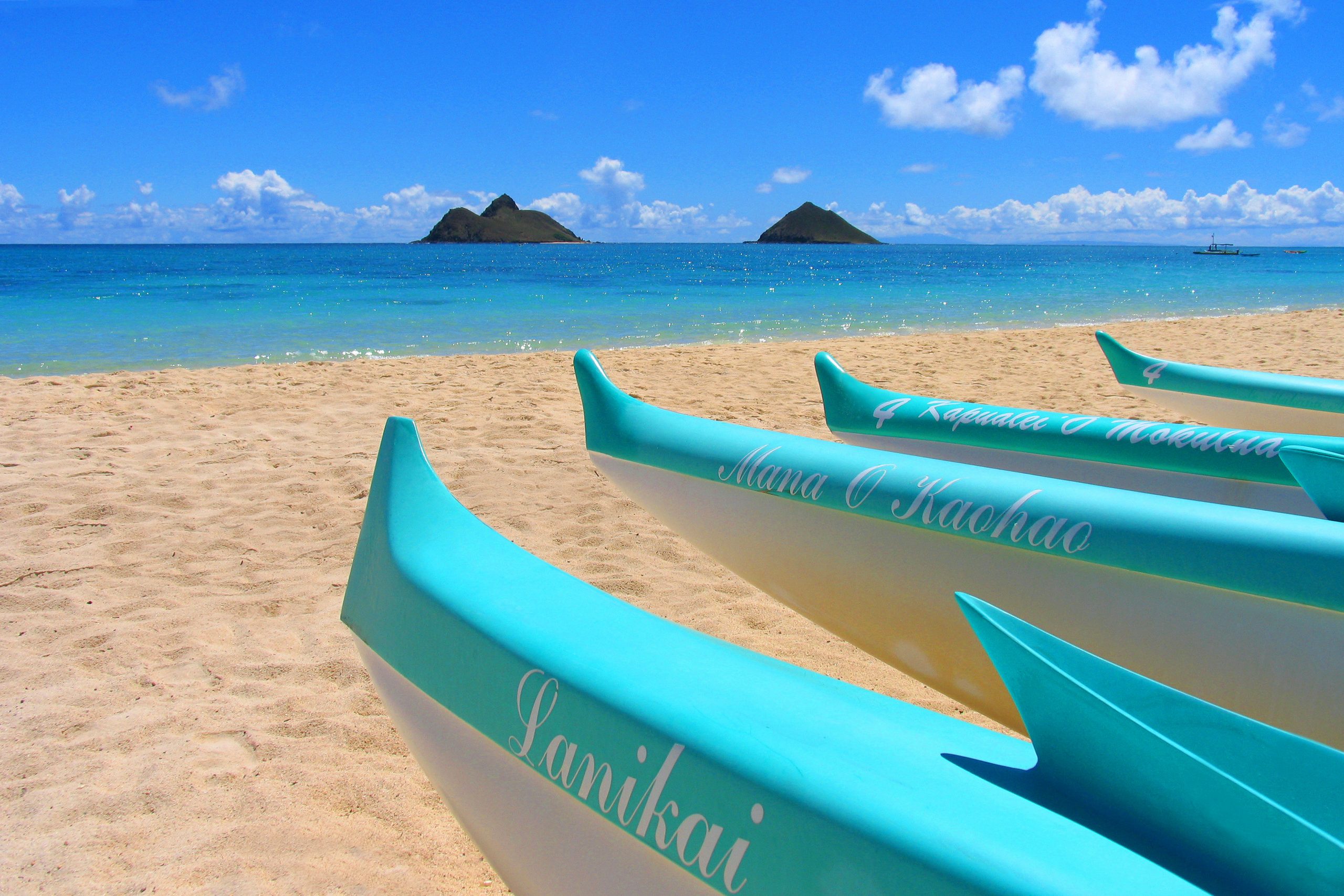
Over the past two decades, Kailua has transformed from a tranquil neighborhood to a buzzing beach town, complete with a Whole Foods Market, Target, and soon, Maui Brewing Co. in a newly developed shopping complex along Kailua Road. Kailua has become one of the hottest, and most expensive real estate markets on the island. But the Windward town still retains is oceanside community charm; there aren’t clusters of high-rises or large cookie-cutter neighborhoods here. Most Kailua residents have called the Windward town community for the majority, if not the entirety of their lives. Kailua town has a smattering of local boutiques and eateries, including the popular Cinnamon’s Restaurant and Boots & Kimo’s Homestyle Kitchen, both renowned for their fluffy, flavored pancakes, Kalapawai Market, the perfect post-beach or hike place for sandwiches and Island Snow for shave ice. Its beaches and parks are the perfect place to relax on the weekends. There’s a reason former President Barack Obama and his family stayed in Kailua each winter during the holidays!
Kailua Beach Park
When most people close their eyes and envision Hawaii, a long stretch of white sand appears, gentle turquoise-hued waves tickling your toes. That vision is a reality with Kailua Beach Park. It’s the tropical paradise for which nearly 5.5 million people visit Oahu each year. It’s also consistently rated one of the best beaches in America by geoscientist and coastal ecologist Stephen Parker Leatherman, more commonly known as Dr. Beach. Sheltered by Kailua Bay, the waves are calm, making it great spot to standup paddleboard, swim, snorkel or bodyboard. Kailua Beach Park is a great beach for families; it’s common to see the whole ohana, or family splashing in the water, camped beneath a shade tent or picnicking at one of the park’s picnic-table pavilions. The bay is even home to three offshore islets, Popoia, or Flat Island and the twin Mokuluas. All three are easily accessible via kayaks and a great way to spend the afternoon. Paddlers have been known to spot a honu, or green sea turtle along the way!
I Love Kailua Town Party
Kailuans are passionate about their town, its unique charm and its surrounding natural beauty. So much so, that in 1992 they started a festival honoring Kailua. This annual community festival says it all in the name—I Love Kailua. After seeing this festival in action, chances are you’ll feel the same, too. It’s one of Windward Oahu’s biggest festivals and in 2017 it celebrated its 25th anniversary. The I Love Kailua Town Party is a fundraiser organized by the Lani-Kailua Outdoor Circle. The festival is a block-party that takes places in the heart of Kailua town—the streets are closed to car traffic—and offers something for everyone in the family, and pets, too. Dozens of Kailua-owned businesses set up booths selling fresh made food, locally made jewelry, home decor accessories and clothing. Don’t miss the popular, “I Love Kailua” logo booth, which sells limited edition apparel and accessories designed annually by Kailua artists. There’s also live music from popular local musicians and hula performances. What’s not to love?
Lanikai
In the 1920s, well-heeled kamaaina made the journey from Honolulu to Kailua in Ford Model Ts on the recently expanded Pali Road. At the time, Kailua’s small beach community, known today as Lanikai, was merely a windswept hillside. But the area had much to offer and its beauty was immediate to all those who saw it. Spectacular views of the twin islets, the Mokuluas can be had from the mountain top, not to mention the tranquility of powder-fine Lanikai Beach below. In fact, the name Lanikai loosely translates to “heavenly sea.” It wasn’t long after Honolulu businessmen first started driving north that the area was developed. In 1924, Lanikai, known to Hawaiians as Kaohao, became incorporated. Two years later, a handful of Honolulu businessmen opened the Mid-Pacific Country Club, one of Oahu’s most prestigious private golf courses. Today, Lanikai is a vibrant neighborhood of civic-minded homeowners who work not only to preserve the neighborhood, but also its world-class beach and its green spaces. Notable community events throughout the year include, twice yearly theater plays by the Lanikai Mortgage Players, the semi-annual Lanikai Craft Fair and the annual Lanikai Woes Day Parade, celebrating all things Lanikai.
Cori’s Tip: For a perfect evening in Lanikai, visit Buzz’s Lanikai—a tiki-themed steakhouse known for its kiawe-grilled teriyaki steak—then go for a stroll on the powdery white sands of Lanikai Beach.
Mokuluas
Mokulua Iki and Mokulua Nui, known collectively known as the Mokuluas, are Oahu’s most popular offshore islets. Meaning “two islands,” the Mokes, as they have been affectionately dubbed, are frequently photographed and reproduced by local artists. But you can also paddle out to Mokulua Nui, the larger of the twin islets. There are several companies in Kailua town that rent kayaks for affordable half-day or full-day rates. And since the waters are calmer thanks to the shape of Kailua Bay, a kayak trip is easy and fun. Be sure to keep an eye for honu, or green sea turtles, too! The islet has a small beach, perfect for a post-paddle lunch. Around the backside is a small cove and tide pool called Queen’s Bath. It’s also a great spot to view Mokulua Nui’s twin, Mokulua Iki. Cori’s Tips: Paddle out to Mokulua Nui on a weekday—commercial vendors also don’t rent kayaks on Sundays. Admire the Mokuluas from a distance, too. From Kailua or Lanikai beach parks, you have a picture perfect view of the islets and from here you watch the sun set. Even better, visit during a full moon.
Lanikai Pillbox Hike
The Kaiwa Ridge Trail, more popularly known as the Lanikai Pillbox Trail has become one of Oahu’s most popular hikes. Each weekend, hundreds of people make the trek up the roughly one-mile hike rising above Windward Oahu. The intermediate trail provides hikers with beautiful vistas of Lanikai, Kailua, the Koolau Mountains, Waimanalo, and out to the sea, the Mokulua islets. The hike gets its colloquial name because of the two pillboxes perched at the top of the hill along the windblown ridge, even though technically the structures were used as observation stations during World War II. (A pillbox is a defensive station, which typically houses a machine gun.) But although the concrete buildings have long since been decommissioned, they provide the perfect spot to take photos, and rest. The hike itself takes about an hour, depending on how many photos you take atop the two pillboxes! The trailhead is on the road to the left of Kaelepulu Drive, just before the neighborhood’s gated community and across from Mid-Pacific Country Club. Cori’s Tips: Hike the Lanikai Pillbox Trail on a weekday in the early morning or late afternoon. Park on Kaelepulu Drive, or the nearby streets and be sure to respect the neighborhood’s residents. Don’t forget water and sunscreen, and leave Fido at home; this isn’t a great hike for pets.
Honolulu – Hawaii’s Only True Metropolis
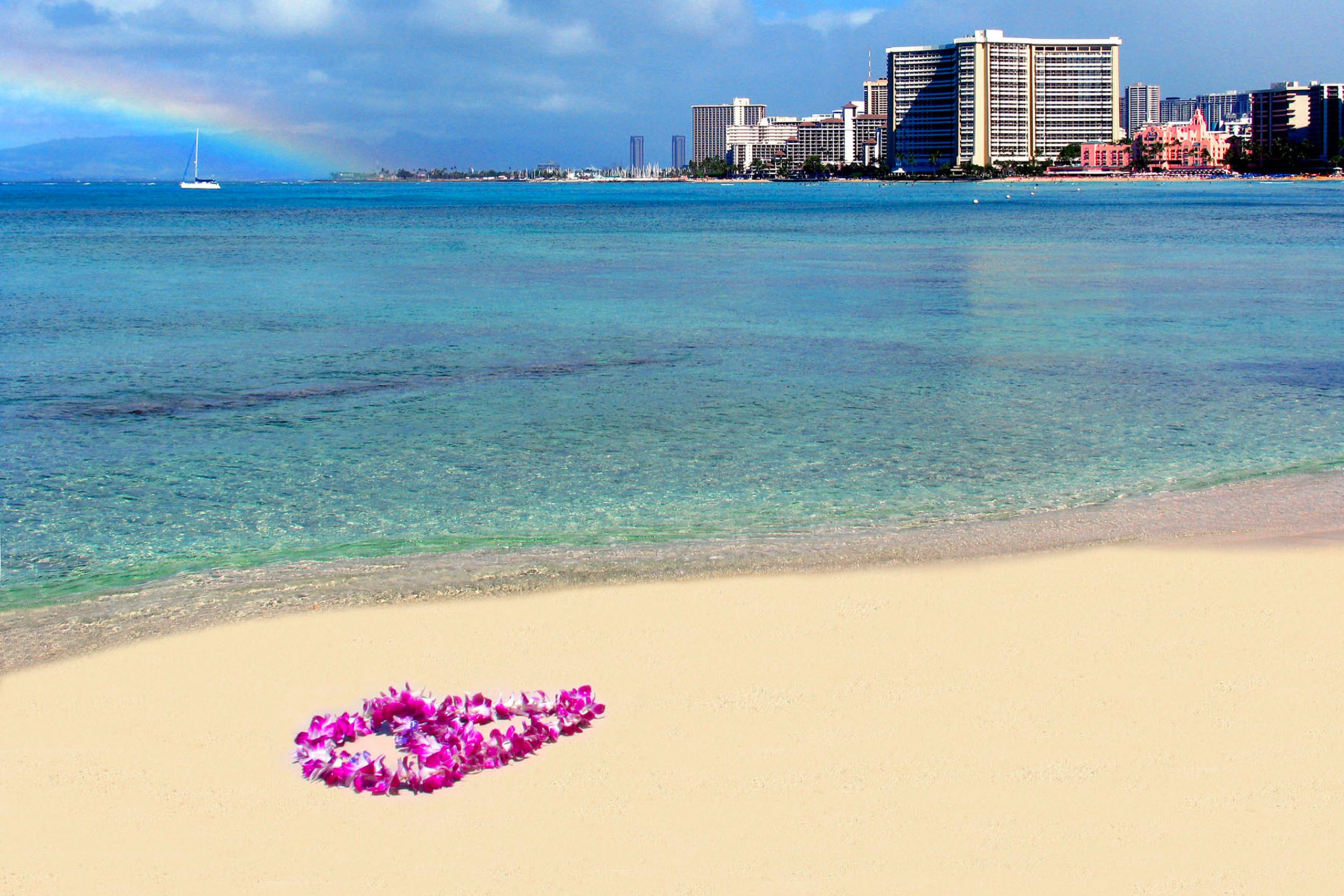
Honolulu is Hawaii’s only true metropolis, plus its capitol and seat of government. It is an area with a rich mosaic of history, from its humble beginnings as a fishing settlement to a modern, urban city. In 1845, Kamehameha III decreed Honolulu the capitol of the Islands from its former location in Lahaina, Maui. Shortly afterward, Iolani Palace, the Cathedral of St. Andrew and Aliiolani Hale, now the home of the Hawaii State Supreme Court were built. Today, the entire island is, in a way, Honolulu—the City and County of Honolulu. Nearly 200 years later, this evolving city is the state’s shopping, nightlife and entertainment destination, while still retaining its cultural roots and historic sites.

Capitol District
There’s a lot packed into four blocks of Honolulu’s downtown core. A melding of Hawaiian monarchy and U.S. government, you can easily explore the city’s history and culture with a self-guided walking tour. Start off with a visit to Kawaiahao Church. Known as Hawaii’s Westminster Abbey, this beautiful church was the house of worship for Hawaiian royalty. The building is made from 14,000 coral blocks. The next block up is Aliiolani Hale. Originally designed to be a palace, the stately building was used in the 1870s as the seat of government for the Kingdom of Hawaii. Today, it’s the home of the Hawaii State Supreme Court. Fronting the building is a gold-leaf statue of Kamehameha the Great. Walking up Mililani Street, next tour Iolani Palace. The palace served five Hawaiian monarchs and had electricity and telephone lines installed before the White House. Across from the palace is Hawaii’s state capitol. Its architecture is symbolic of the Island itself, from the 40 columns representing palm trees, the legislative chambers shaped like volcanic cinder cones to the reflecting pools symbolizing the ocean. The last stop is the Hawaii State Art Museum. This free museum features the art of Hawaii and is housed in an ornate building, once an Armed Forces YMCA building.
North Shore – More than the Banzai Pipeline
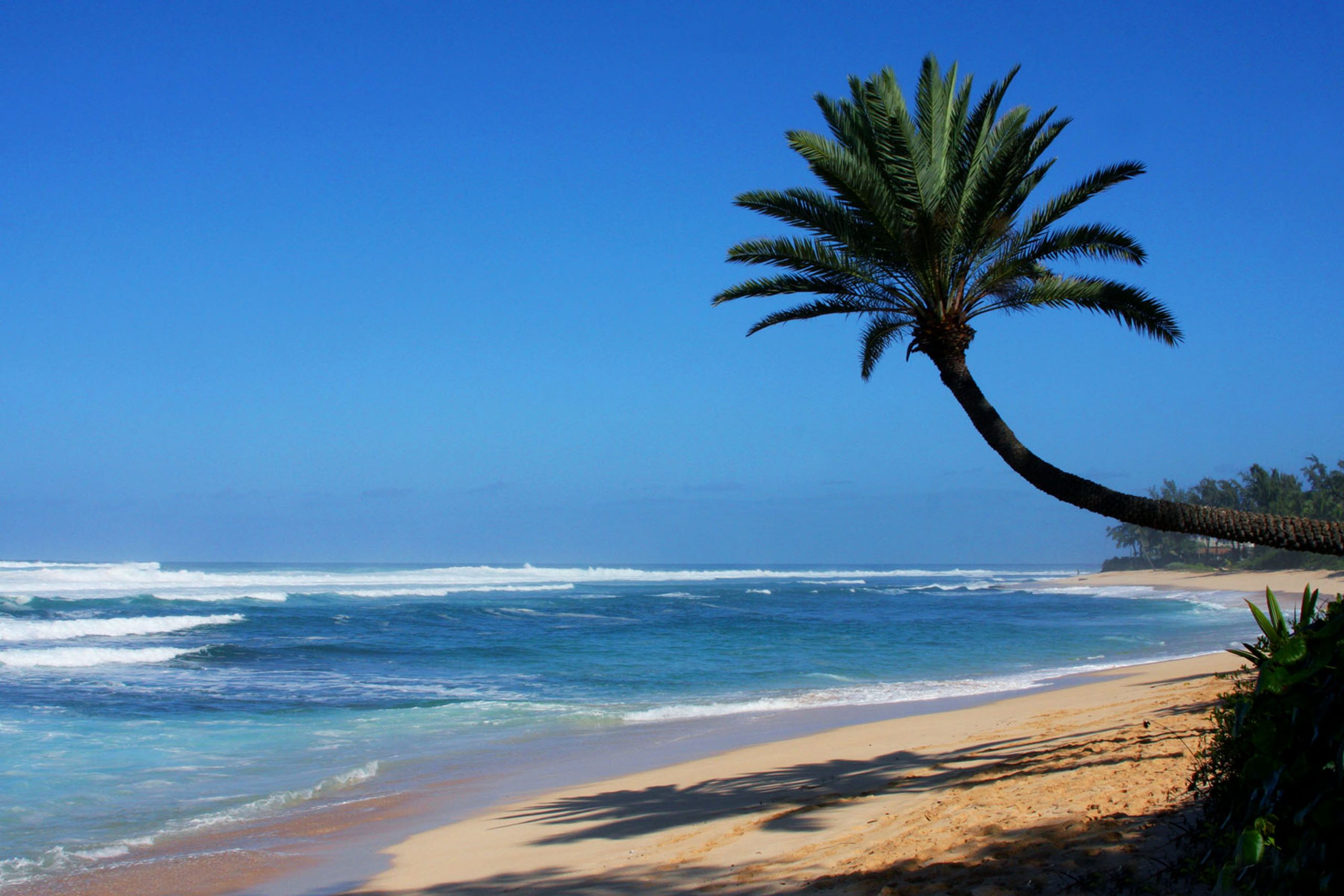
To experience the sunny, country vibes of Oʻahu, just go North. Today, when most people think of the North Shore, world-famous surf breaks come to mind, growing to monster-high levels each winter and being tamed by professional surfers from across the globe during prestigious contests. These renowned beaches attract thousands of visitors to Oʻahu. This includes Waimea Bay, home to the Eddie Aikau Big Wave Invitational, after legendary Hawaiian waterman of the same name, and ʻEhukai Beach, also known as Banzai Pipeline, where the Billabong Pipeline Masters is held. In the summertime, the small rocky bay of Shark’s Cove, located in Pūpūkea just before ʻEhukai Beach, is one of the best snorkeling spots. Here you can glimpse tropical fish in a rainbow of colors, eels, honu, or Hawaiian green sea turtles and coral. (It’s advised to only snorkel at Shark’s Cove in the summer months; during the winter, the waves along the North Shore are too big to safely swim and snorkel.)

The biggest stopover along the North Shore is Haleʻiwa, a lively surf town home to beach boutiques and local restaurants. Be sure to visit Matsumoto Shave Ice in the Haleʻiwa Store Lots shopping center. This North Shore mainstay opened as a Haleʻiwa general store in 1951. Today, it’s one of the most popular shave ice joints. On a busy day, the store sells more than 1,000 shave ice cones! A visit to the North Shore also wouldn’t be complete without a plate lunch of buttery, garlic shrimp. Giovanni’s Shrimp Truck is one of the original North Shore food trucks. The shrimp scampi is Giovanni’s mainstay menu item. Each plate comes heaped with 12 peel-and-eat shrimp and two scoops of rice.
There’s also the Dole Plantation. Technically it’s in Wahiawā, which is on the way to the North Shore, but it’s one of my family’s favorites. In 1901, James Dole founded the Hawaiian Pineapple Company, later known as the Dole Food Company. It was the largest pineapple company in Islands until it closed in 1991. When I was a kid, we would visit the fruit stands near the plantation, chock full of fresh-from-the-field pineapple. Vendors would chop the pineapple into spears and generously sprinkle them with salt. We’d get so sticky eating the sweet, juicy fruit! Today, you can try refreshing Dole Whip, made with real pineapple, when visiting the plantation.
The North Shore is more than its famous beaches and ʻono, or delicious, food, though. Historians estimate that Hawaiians first settled in the area known today as the North Shore in the 11th century. In particular, Waimea Valley was an especially thriving community, abundant with fishponds and crops of taro, sweet potato and more. Kamapuaʻa, the Hawaiian ruler of Oʻahu dubbed Waimea Valley the “Valley of the Priests” and he and his descendants lived in and cared for the valley for centuries. Today, Waimea Valley is a preserved botanical garden that boasts roughly 2,000 acres. There are more than 5,000 plant species cared for here. Waimea Valley also has taro cultivated in traditional loʻi, or irrigated agricultural terraces and a restored heiau, or place of worship, dedicated to Lono, the Hawaiian god of agriculture, fertility and peace.
Mililani – 1986 All-America City
Hawaiʻi has several lovely planned communities, but the first one was built here on Oʻahu. Mililani, which translates to “beloved place of chiefs” in Hawaiian, sprouted from red dirt of former productive sugar cane fields of Central Oʻahu in 1968. The first homes were sold for between $25,000 and $35,000! It then garnered the distinction of becoming an All-America city in 1986. In fact, when you enter Mililani, you’ll see a sign informing you of such: “Mililani 1986 All-America City.” The National Civic League honored Mililani’s civil spirit after its residents organized a grassroots campaign in the early ’80s to have community developers and the state government better filtrate agricultural pesticides from its drinking water.
The city’s first generation are now raising their own keiki, or children here. Today, it has a population of nearly 28,000 and the 2020 median home price is approximately $715,000. Mililani’s neighborhoods are lined with shade trees and its streets are named for Hawaiian stars, nights and days. Houses here are spacious, newer and best of all, can often be affordable. Plus, the community is perfect for families. Mililani has great schools, community parks and public golf courses. The H-2 freeway, which opened in 1976, makes for a shorter and less congested commute to and from Honolulu, and to U.S. Army Schofield Barracks and Wheeler Army Airfield, where most Mililani residents work. Mililani is also a short drive to the North Shore, giving residents a fun weekend getaway and premier beach options.
While Mililani is considered a charming bedroom community, the city still has a diverse array of amenities and services, including restaurants and shopping centers. Mililani is divided into two defined areas: Mililani Town—the older and more developed community—and Mililani Mauka. The H2 highway neatly splits Mililani Town, located on the West side, and Mililani Mauka. The Town Center of Mililani, situated in Mililani Town, is the largest shopping center in the area and features a movie theater, gym, fast-casual and sit-down restaurants, banks and more. On the east side of highway is Mililani Mauka, as well as the Launani Valley neighborhood. These communities sit nestled against the emerald green mountain range; mauka means inland or mountain in Hawaiian. These neighborhoods lend themselves to a cozy feeling and offer a tranquil respite from the bustle of city life.
An Important Part of Hawaiian Culture – Honu
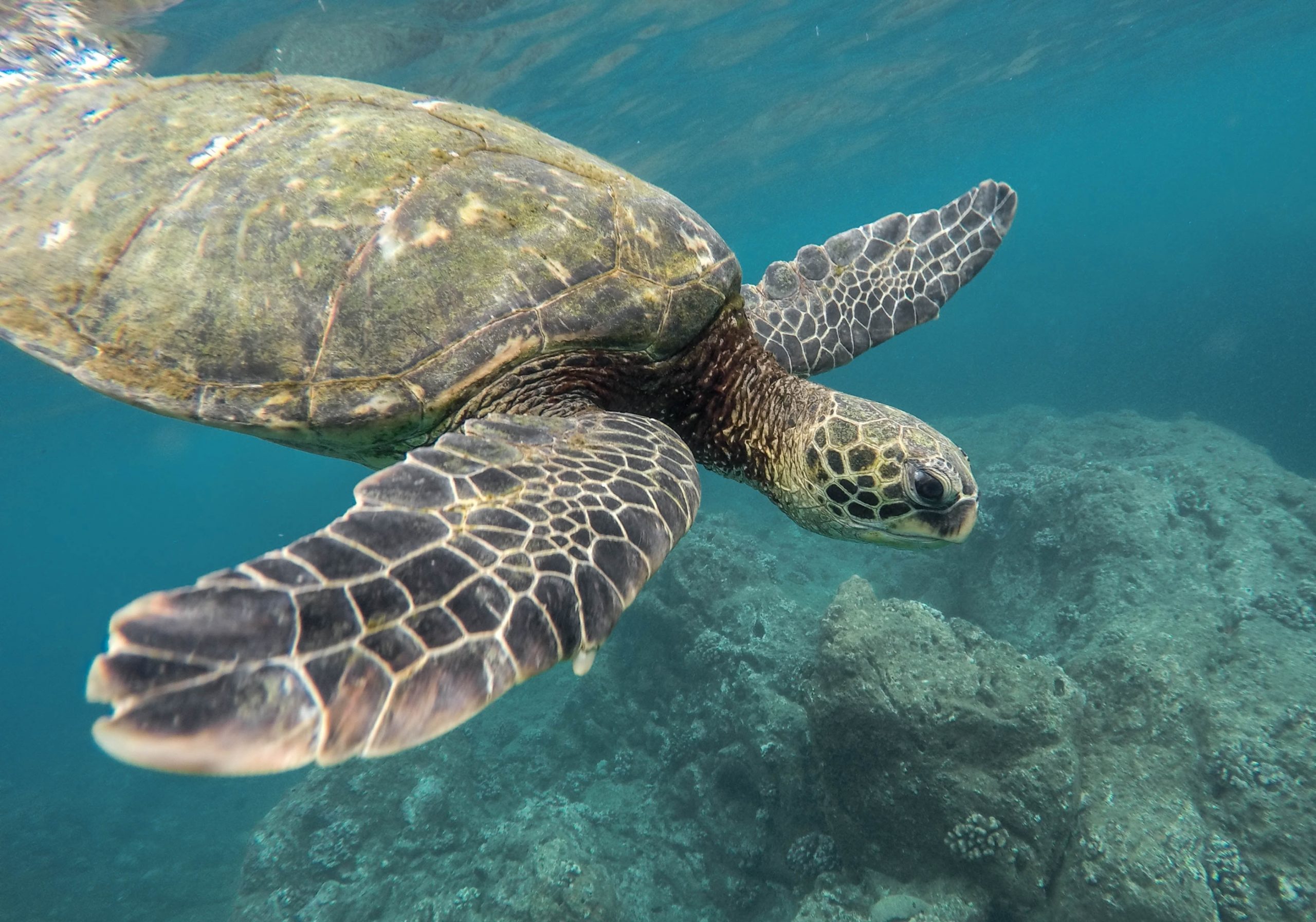
Gliding seamlessly through the water, honu, or Hawaiian green sea turtles are a magical sight and one of my favorite sea creatures to spot under Oʻahu’s azure waters. Honu are native to Hawaiʻi, and are the largest hard-shelled sea turtles in the world. They can weigh more than 300 pounds and reach lengths of more than four feet. These reptiles stick to a no-meat diet. Good thing, too, because honu don’t have teeth! Instead, honu use their finely serrated jaws to eat plants like algae, seaweed and sea grass.
Honu remain an important part of Hawaiian culture. Some Hawaiians believe that honu are their ʻaumakua, or individual or family deified ancestor. ʻAumākua sometimes assume the shape of animals, including the sea turtle. Honu were also thought to belong to aliʻi, or chiefs and raised in fishponds. Bones, shells and oil from these turtles were used to make fish hooks, bowls, jewelry, medicine and more.
Today, it’s common to spot these graceful creatures when you’re snorkeling or scuba diving, but you can also catch sight of their shell, ranging in color from streaky yellow and brown to black, and their spotted heads as they pop up to the water’s surface for a breath, or scoot onto the sand to sunbathe. Remember: honu are an endangered and protected species, so be sure to look, but not touch!
So, where can you see honu? Beaches on Oʻahu’s North Shore are popular places for sea turtles. This includes the renowned Laniakea Beach, more commonly known as Turtle Beach, and 15 minutes up the road from Haleʻiwa Aliʻi Beach Park. You’ll often see turtles resting along this small beach. For this reason, it’s become a popular, and sometimes crowded, area with visitors. But the honu have back up. Throughout the day, volunteers with the nonprofit, Mālama na Honu—which means Protect the Turtles in Hawaiian—are also on the beach to ensure the reptiles remain safe while on the sand. The nonprofit also helps identify and track the turtles and can provide information to those who want to share their passion for the honu.
Green sea turtles also frequent one of my favorite neighborhood swim spots, Kailua Beach Park. Located on Oʻahu’s windward or East coast, the large, tranquil beach park is a favorite for both kamaʻāina, or residents as well as visitors. I like to jump in the water here, swimming in the calm waters of Kailua Bay. Sometimes, I’ll spot a honu in the near distance. It’s a special experience!

While many adult honu wade about the shores of the Hawaiian Islands, most female Hawaiian green sea turtles nest at the French Frigate Shoals in the Northwestern Hawaiian Islands. They migrate to the remote atoll every two to five years. It’s a distance of roughly 600 miles! Upon reaching the uninhabited island, they strenuously pull themselves as far up the beach as possible to dig their nests in the sand and lay their eggs. For the first time in recorded history, in summer 2020, Hawaiian green turtles began nesting at Bellows Beach in Waimānalo, located about 20 minutes from Kailua Beach Park. (Officials think this is because of the temporary beach closures during the COVID-19 pandemic.) About two months later, hatchlings are born.
DIY: Decorating Your Home With Photos
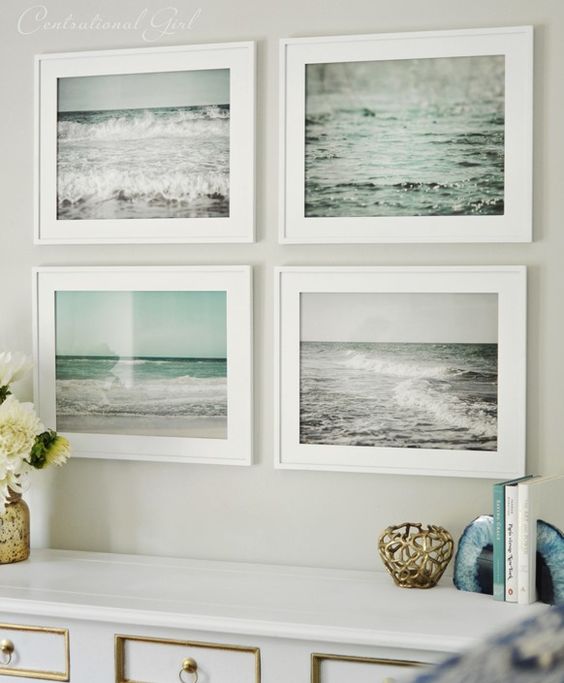
Decorating with photos is an awesome way to spice up your home in a really dramatic way without spending a whole lot of money. Don’t worry if you haven’t got a lot of money; your own photos are probably better than anything you’d buy.
Dial up the gorgeous drama of your NYC home with a fun photo decor DIY project. Photographs, like art, can help us express ourselves in many different ways. They can help us play up our sentimental side, make important statements, and complete the canvas of our homes. Learning how to decorate with photos, as simple as it sounds, can be quite daunting once you put your mind to it. How exactly should you go about it? Should you hang provocative art in your living room where everyone can see it? Is it cheesy to hang photos of your entire family on your fridge? What’s the right thing to do?
The Right Way Is Your Way
Don’t worry that you’ll end up decorating with photos that people may think are cheesy or that are too much. Photographs are an expression and extension of yourself, so you’re hanging and displaying them to express your vision. Of course, if you have children regularly visiting your home, you don’t want to hang something for mature audiences only in a room where everyone gathers. You know who you invite into your home; use your judgment.

Use Your Own Photos
There are photographic gems you probably aren’t even aware of (or even remember exist) buried inside your very own camera or flash drives. Photos of vacations past, a child’s birthday party, a lonely street at night — any of these could be striking or thought-provoking enough to make perfect wall art. You don’t have to use the whole image; maybe it’s a detail of an image that’s frame worthy. If you don’t have the scene you’re looking for, create it: Your child’s feet as they leap off the ground; your grandmother’s smile the instant she bursts into laughter upon hearing an off-color joke; your cat’s profile as she watches a bird outside the window. The possibilities are literally endless.
Display Them In Innovative Ways
You can rarely go wrong with square or rectangular black frames backed by white matte when it comes to framing your pictures, but there are many different ways you can display your photos. Attach a series of photos individually on metallic clips and hang them from a metal wire grid that takes up your entire wall. Put some vintage photos inside of old mason jars. Blow up a favorite photo to life-size stats and hang it front and center in your main living area or passageway.
The Best Ways to Store Fruits and Veggies
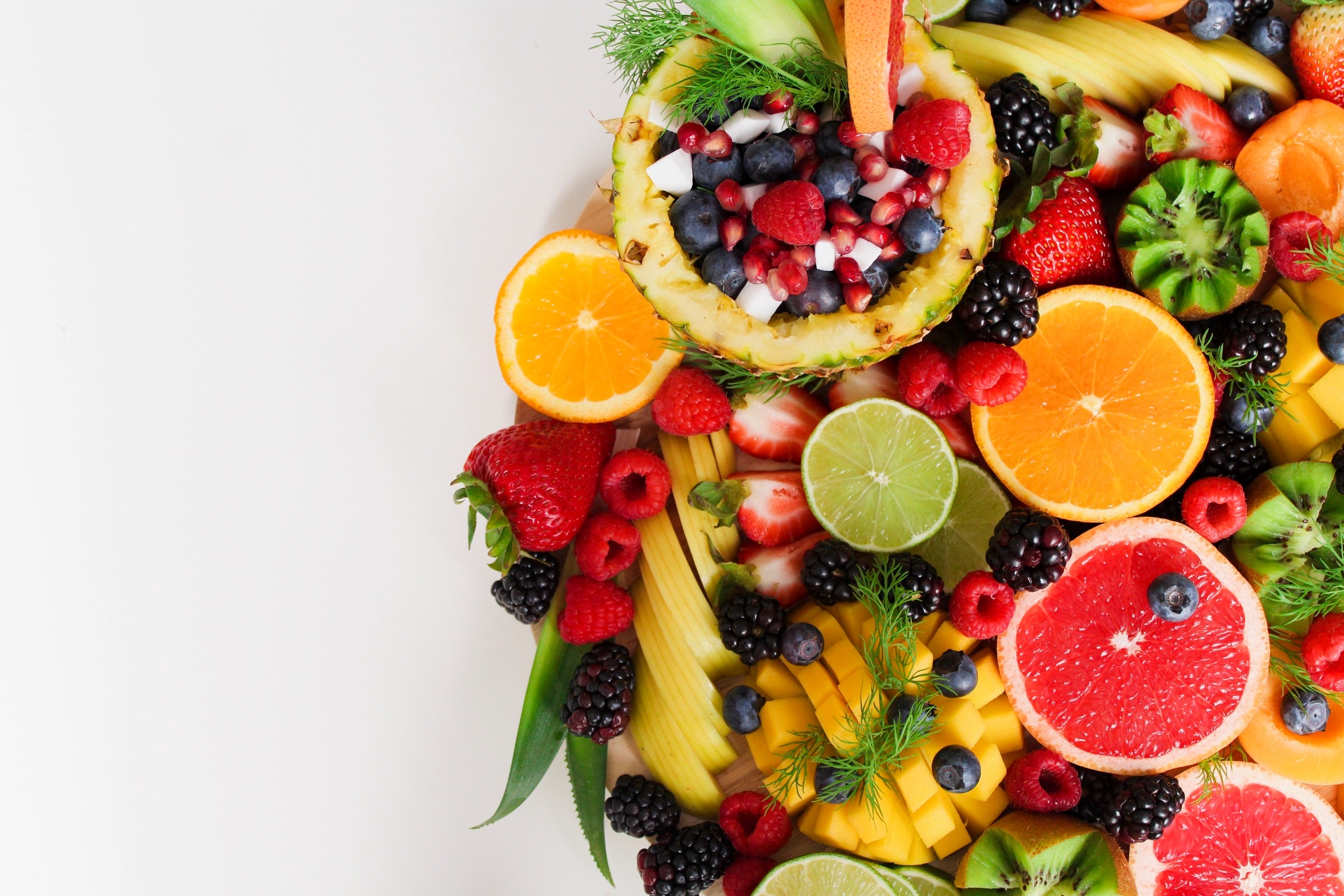
How do you store veggies and fruits? What can stay out on the counter and what needs to go in the fridge?

To keep your food fresh, it’s important to know how to use the crisper drawers of your refrigerator properly. Follow the tips below for the best way to store fruits and vegetables both inside and outside of your refrigerator.
In a Cool, Dark Place
Never store these items in the fridge. Your pantry is a great place for these fruits and veggies, which do best out of the sunlight:
Veggies:
Garlic
Onion
Sweet potatoes
Winter squash
Fruit:
Melons
On the Counter
These items will do fine on the counter for three to five days, if you leave them whole. Put any produce that needs to ripen in a brown paper bag for a few days to speed up the process. For longer storage, transfer produce to your fridge’s low-humidity drawer.
Veggies:
Asparagus and celery —Stand these up in a shallow glass of water.
Avocados
Cabbage
Eggplant
Kale, collards, and chard — These also do well in a shallow glass of water.
Summer squash
Tomatoes
Fruit:
Apples
Bananas
Citrus fruits — Keep these in a bowl with plenty of air circulation.
Kiwis
Mangoes
Pears
Pineapples

In the Low-Humidity Drawer
Produce that can dry out a little should go in this drawer, with the humidity slider open. This drawer is one-step removed from the main fridge, slightly less chilled but still dry. Store any cut or sliced fruits and veggies here. Place these types of produce directly into the drawer:
Veggies:
Corn — Leave it in the husk.
Peppers — Store them in a plastic bag.
Fruit:
Apples — Store them here if you like them cold.
Ripe stone fruits, such as peaches and plums — Leave them in the drawer as-is.
In the High-Humidity Drawer
Produce that needs a moist environment goes in here, with the humidity slider closed so that water vapor is held in the drawer to keep things fresher for longer. Fruit does not keep well in a high-humidity drawer.
Beets — Cut off the tops, then store the beets in a plastic bag with a damp paper towel.
Broccoli
Carrots
Green beans — Keep these in a plastic bag with a damp paper towel.
Leafy greens like lettuce and spinach — Wash and dry them thoroughly first.
In the Main Fridge Compartment
Fresh herbs — Store them wrapped in a damp paper towel in an airtight container.
Mushrooms — Keep them in their packaging or a brown paper bag.
Berries and grapes — Store them unwashed. Wash them just before you’re ready to eat them.
One of the best advantages of storing fruits and veggies in their proper place is that you are far less likely to end up with a crowded crisper drawer, which leads to soggy forgotten food. Your crisper drawers are indispensable for keeping produce fresh, but only if you use them correctly. Also, if you keep lots of produce sitting out on the counter, you could find yourself and your family reaching for it more often than bags of chips in the cupboard.
How to Install a Pet Door
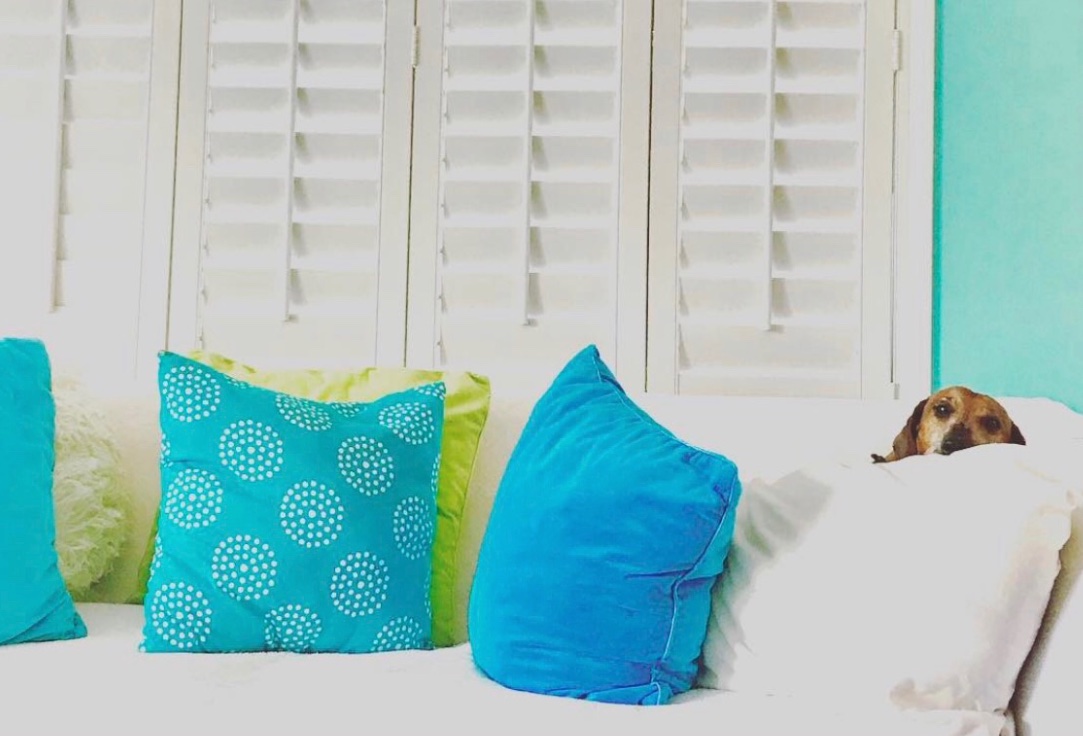
In. Out. Repeat. Sound familiar? Stop playing doorman and install a pet door in your home with this guide.
The first and most important step in determining whether a pet door is right for your home is to consider what issues might come from your pet’s new-found freedom. For instance, does your dog or cat have a tendency to run away? Or, do you live on a busy street? Will your neighbors mind if your pet is outside unattended? Keep all of these things in mind before installing a free pass to the outdoors. Installing a pet door may require first putting up a fence around your yard to ensure your pet’s safety. Whether you opt for a physical fence or an invisible one, a barrier will give you piece of mind that your furry friend won’t get lost or hurt when outdoors.
Choose the Right Door
After you’ve addressed your pet’s outdoor safety, you’ll need to determine the kind of pet door that is right for your home. Just as there are many things to consider when choosing a front door for your home, there are plenty of elements to consider when selecting a pet door.
A pet door can be installed in the wall, storm or screen door, garage door or sliding glass door. Cost of installation and complexity of the project varies with each option, storm door installation being the most cost-effective.
Before making your pet door selection, you’ll need to take your pet’s measurements. Consider that your pet will duck his head when entering and exiting, so you’ll want to find a door that is slightly taller than your pet’s shoulder height and at least two inches wider than his body. Creating a mock door out of cardboard is an easy way to test your measurements.
Ready to install? Hire a professional, or follow a step-by-step guide from your local home improvement store.

Consider Resale
While 65 percent of American households included at least one pet, according to the Humane Society, some may not be ready to commit to a permanent pet door for resale purposes. If a temporary option is best for your home, consider opting to install the pet door in your storm door or screen door, so it can easily be removed or replaced should you decide no longer need it.

 Facebook
Facebook
 X
X
 Pinterest
Pinterest
 Copy Link
Copy Link



